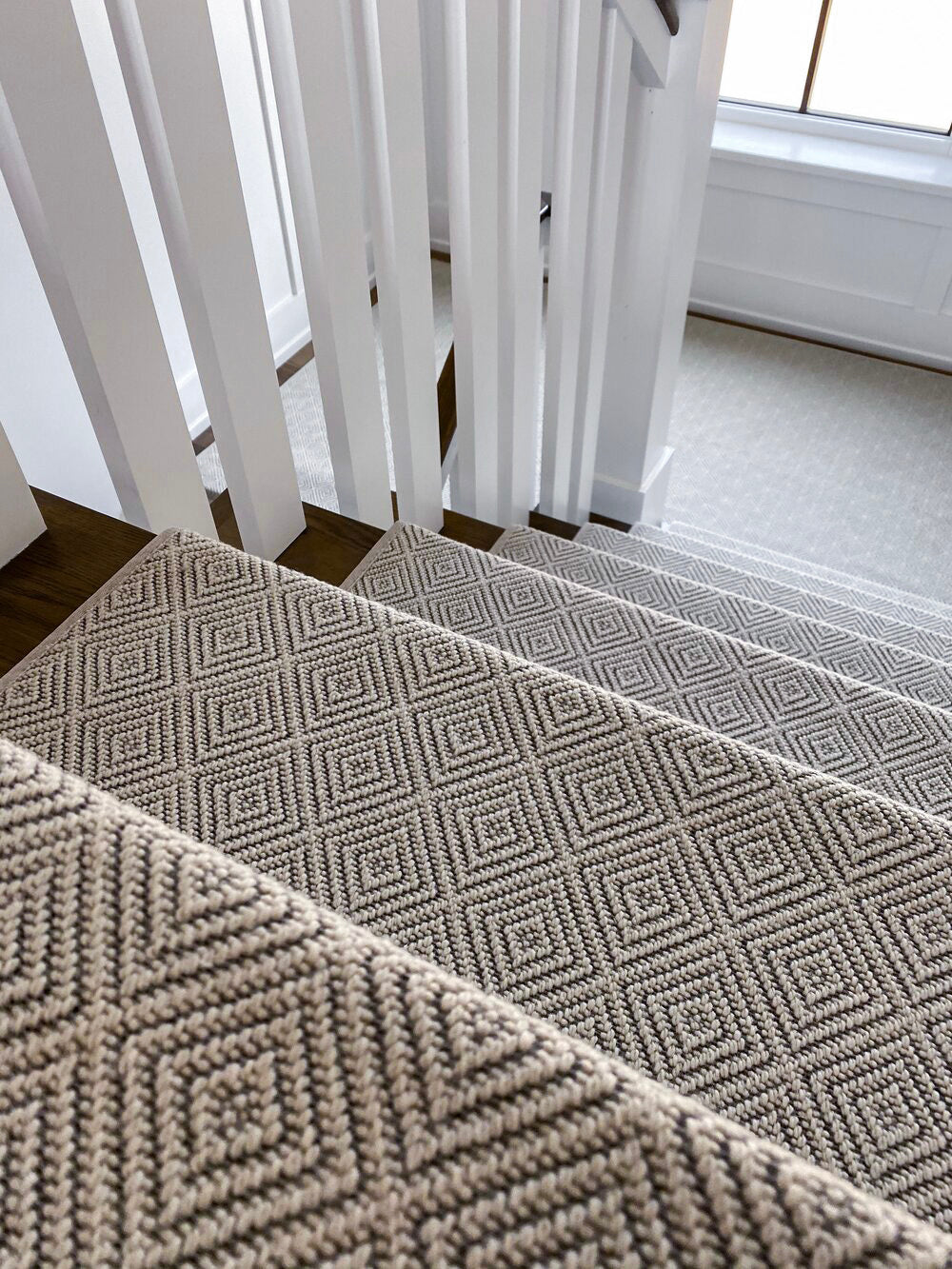Carpet Stair Tread Care & Maintenance
CARE & MAINTENANCE
Wool carpet is an investment in your home; your choice of wool carpet is the first step to having an attractive, easy-care environment. Following basic maintenance rules will ensure that your investment in new floor covering will last longer and look wonderful for years.
1. Preventative Carpet Stair Tread Maintenance
There are a number of preventative carpet stair tread care and maintenance techniques that will help to keep your carpets in great shape.
- Utilize-off mats at all entrances to absorb soil and be clean regularly.
- Use a durable pad under carpet on stairs. A quality pad offers better comfort underfoot and is proven to add life to your carpet.
- If your vacuum has a bag, empty it regularly to ensure the vacuum doesn’t lose suction.
2. Vacuuming
Walking on soiled carpet pushes the soil particles below the pile. Vacuuming frequently and thoroughly can help.
- Carpets with thick or loopy pile can be damaged by rubbing form vacuum brushes. A strong suction without a beater is best.
- Vacuum cleaners with a rotating beater are appropriate for cut pile wool or wool blend carpets.
- Empty your vacuum often to maintain high level suction.
3. Stain Removal
When a spill occurs, acting quickly can make the difference in preventing and removing stains.
- Use a mixture of 1/2 tsp. soap to quart of water in a spray bottle.
- Another solution that can be used is one part vinegar to 4 parts water.
- Nail polisher remover
- Chewing gum remover
- Dry cleaning fluid
4. Regular Cleaning
Prompt attention and regular cleaning. Here are a few other carpet stair tread care and maintenance practices to follow.
- Quickly absorb liquid by blotting with white paper towels.
- “Steam cleaning” is a great way to refresh color by removing particles from the oily film on carpets.
- Regular vacuuming is important and key to fresh looking carpet for years to come.
Natural Characteristics & Maintenance of Sisal
Sprouts – Short fibers that were tucked in during the manufacturing process. Seagrass, jute, and hemp are short fibers. During handling, they sprout. Clipping sprouts is recommended.
Variation in Loop Size – Carpets made of natural fibers may have irregular yarns that can create appearance of a variance in loop size (warp or weft yarns). Variations of either thick or thin yarns within 50% of normal are allowed.
Shedding of Loose Fibers is Normal – It is a natural result of the process used to create carpets. When floor coverings are produced, a combing process occurs, which helps remove short and broken fibers. However, some fibers fall onto the surface of the pile and appear as ‘fluff’. The shedding can vary depending on the material type.
Irregularity in the Ribs – Some ribs will be closer together, some farther apart.
Bowing – Industry standard allows up to 2% bowing of woven broadloom carpet. Bowing should be taken into consideration when planning for a seam.
Color Changes – Natural fibers eventually return to their original color. Bleached products darken over time, and dyed fibers fade. Avoid direct sunlight.
Color Variance – Showroom samples may not match current inventory. Roll differences are more significant with natural fibers than synthetic ones. Materials from different rolls are seldom the exact same color.
Striation – Color variance lines are normal in natural fiber carpet because color variances occur naturally.
Foreign Yarns – This occurs when fibers from previous production find their way into the current yarn. This is due to the nature of the fiber, collection process, and weaving process. Foreign yarn is common in all natural fiber products.
Expansion & Contraction – The hydroscopic nature of natural fibers means they adjust to environmental conditions, they are constantly moving. Loose-lay for 24 hours in the room in which it will be installed, and at the temperature it will typically experience. This allows the fibers to acclimate to their new surroundings.
Visible Seam – These are normal, even when seaming is done well.
For Indoor Use Only – Natural fiber products should not be used in areas where moisture is present or ventilation is inadequate.
Residential Use – All products are recommended for residential use only unless otherwise specified.

